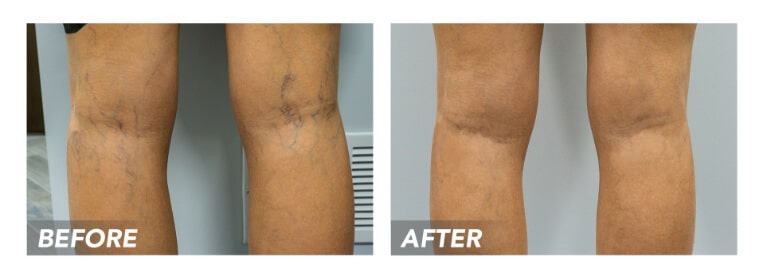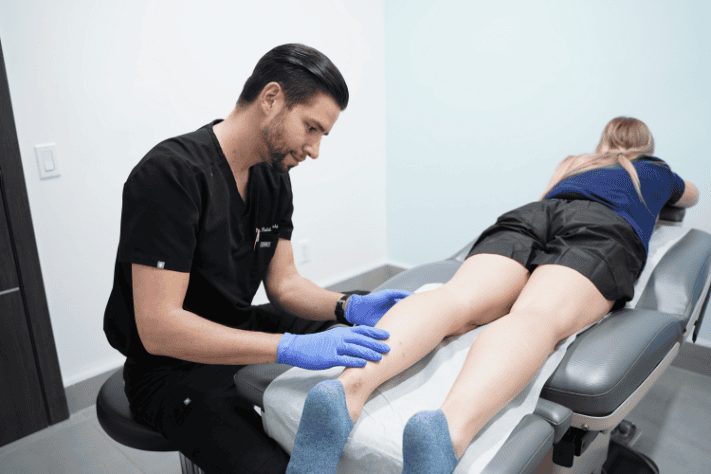Are Varicose Veins Covered by Insurance and When to See a Vascular Doctor?
Varicose veins are a common concern, affecting millions of people worldwide. These twisted, enlarged veins can cause discomfort, pain, and even lead to more severe health issues if left untreated. For those dealing with varicose veins, a crucial question arises: Are varicose veins covered by insurance? Additionally, understanding when to see a vascular doctor can help prevent complications and ensure timely treatment. In this article, we will explore the advantages of knowing your insurance coverage, the importance of seeking medical attention, and the critical role of vascular doctors in managing varicose veins.
Understanding Varicose Veins
Varicose veins occur when the veins, primarily in the legs, become enlarged and twisted due to weakened or damaged valves. These veins can be unsightly and often cause symptoms such as aching, throbbing, and swelling. In more severe cases, varicose veins can lead to complications like skin ulcers or deep vein thrombosis (DVT). While many people consider varicose veins a cosmetic issue, they are often a sign of an underlying vascular condition that requires medical attention.
Advantage of Insurance Coverage for Varicose Veins
One of the primary concerns for individuals with varicose veins is whether their treatment will be covered by insurance. The good news is that insurance coverage for varicose veins is often available, especially when the condition is deemed medically necessary.

Medically Necessary vs. Cosmetic Treatment
Insurance companies typically differentiate between treatments that are medically necessary and those that are cosmetic. If your varicose veins are causing significant pain, discomfort, or other symptoms that affect your daily life, your treatment may be considered medically necessary. This can include procedures like sclerotherapy, endovenous laser treatment (EVLT), or vein stripping.
On the other hand, if your varicose veins are not causing symptoms and are primarily a cosmetic concern, insurance may not cover the treatment. However, it’s essential to consult with your healthcare provider and insurance company to determine your coverage options.
Pre-Authorization and Documentation
To maximize the advantage of insurance coverage, it’s crucial to understand the requirements for pre-authorization and documentation. Most insurance companies require a thorough evaluation by a vascular doctor, including diagnostic tests such as ultrasound, to determine the severity of your condition. Proper documentation of your symptoms and the impact on your quality of life is essential for obtaining coverage.
When to See a Vascular Doctor
Knowing when to see a vascular doctor is vital for managing varicose veins effectively. Early intervention can prevent complications and improve outcomes. Here are some key indicators that it’s time to consult a vascular specialist:
Persistent Pain and Discomfort
If you experience persistent pain, aching, or discomfort in your legs, especially after prolonged periods of standing or sitting, it’s time to see a vascular doctor. These symptoms may indicate that your varicose veins are more than just a cosmetic issue and could require medical intervention.
Swelling and Inflammation
Swelling in the legs, ankles, or feet is a common symptom of varicose veins. If you notice persistent swelling or inflammation, it’s essential to seek medical attention. This could be a sign of venous insufficiency, a condition where blood flow in the veins is inadequate, leading to pooling of blood in the lower extremities.

Skin Changes and Ulcers
Varicose veins can lead to changes in the skin, such as discoloration, thickening, or the development of ulcers. Skin ulcers, especially around the ankles, are a severe complication that requires immediate medical attention. A vascular doctor can assess the severity of your condition and recommend appropriate treatment to prevent further complications.
Heavy or Restless Legs
A sensation of heaviness or restlessness in the legs, particularly at night, can be a sign of venous insufficiency or other vascular issues. If you experience these symptoms regularly, it’s important to see a vascular doctor for a thorough evaluation.
Advantage of Early Diagnosis and Treatment
The advantage of seeking medical attention early cannot be overstated. Early diagnosis and treatment of varicose veins can prevent complications and improve your quality of life. Here’s why early intervention is crucial:
Preventing Complications
Varicose veins can lead to serious complications if left untreated. These complications include deep vein thrombosis (DVT), skin ulcers, and chronic venous insufficiency. Early diagnosis and treatment can prevent these conditions and reduce the risk of long-term health problems.
Improved Treatment Outcomes
The earlier varicose veins are treated, the better the outcomes. Early treatment can reduce the severity of symptoms, improve blood flow, and prevent the progression of the condition. This can lead to faster recovery times and a lower risk of recurrence.
Enhancing Quality of Life
Varicose veins can significantly impact your quality of life, causing pain, discomfort, and limiting your ability to participate in daily activities. Early treatment can alleviate these symptoms, allowing you to enjoy a more active and comfortable lifestyle.
Treatment Options for Varicose Veins
There are several treatment options available for varicose veins, ranging from conservative measures to more advanced procedures. Understanding these options can help you make informed decisions about your care.
Conservative Treatments
For mild cases of varicose veins, conservative treatments may be sufficient. These include:
- Compression Stockings: Wearing compression stockings can help improve blood flow and reduce swelling in the legs. These stockings apply gentle pressure to the legs, helping to prevent blood from pooling in the veins.
- Lifestyle Changes: Regular exercise, maintaining a healthy weight, and avoiding prolonged periods of standing or sitting can help manage varicose veins and prevent them from worsening.
- Elevation of Legs: Elevating your legs above heart level several times a day can help reduce swelling and improve circulation.
Minimally Invasive Procedures
For more severe cases of varicose veins, minimally invasive procedures may be recommended. These include:
- Sclerotherapy: Sclerotherapy involves injecting a solution directly into the varicose veins, causing them to collapse and eventually be absorbed by the body. This procedure is often used for smaller veins and has a high success rate.
- Endovenous Laser Treatment (EVLT): EVLT is a minimally invasive procedure that uses laser energy to seal off varicose veins. This procedure is highly effective and has a shorter recovery time compared to traditional surgery.
- Radiofrequency Ablation: Similar to EVLT, radiofrequency ablation uses heat generated by radiofrequency energy to close off varicose veins. This procedure is also minimally invasive and has a high success rate.
Surgical Options
In cases where minimally invasive procedures are not sufficient, surgical options may be considered. These include:
- Vein Stripping: Vein stripping involves removing the affected veins through small incisions in the skin. This procedure is typically reserved for severe cases of varicose veins.
- Phlebectomy: Phlebectomy is a surgical procedure in which small varicose veins are removed through tiny incisions. This procedure is often used in conjunction with other treatments for optimal results.
Advantage of Choosing the Right Vascular Doctor
Selecting the right vascular doctor is essential for achieving the best possible outcomes in the treatment of varicose veins. Here are some factors to consider when choosing a specialist:
Experience and Expertise
Look for a vascular doctor with extensive experience in treating varicose veins and other vascular conditions. An experienced specialist will be able to accurately diagnose your condition and recommend the most effective treatment options.
Access to Advanced Technology
The advantage of choosing a vascular doctor who has access to advanced technology cannot be overstated. Procedures like EVLT and radiofrequency ablation require specialized equipment and expertise. Ensure that your chosen specialist has access to the latest technology and is skilled in performing these procedures.
Personalized Care
Every patient is unique, and varicose veins can vary significantly in terms of severity and symptoms. Choose a vascular doctor who offers personalized care and takes the time to understand your specific needs and concerns. A personalized treatment plan can lead to better outcomes and a more positive experience.
Conclusion: Take Advantage of Your Health and Insurance Coverage
Dealing with varicose veins can be challenging, but understanding your insurance coverage and knowing when to see a vascular doctor can make a significant difference in your treatment journey. The advantage of early diagnosis and treatment cannot be overstated, as it can prevent complications and improve your quality of life. Whether you need conservative management or advanced procedures, selecting the right vascular doctor is key to achieving the best possible outcomes. Don’t hesitate to take control of your health and explore the options available to you. With the right care and attention, you can manage varicose veins effectively and enjoy a healthier, more comfortable life.
Comments
Post a Comment